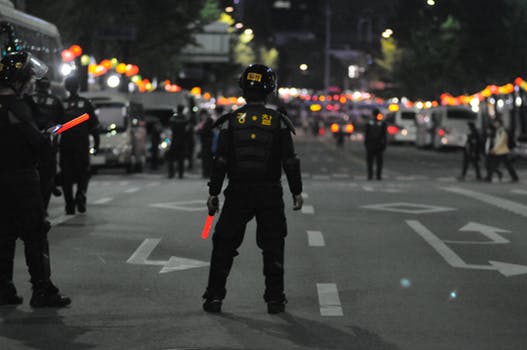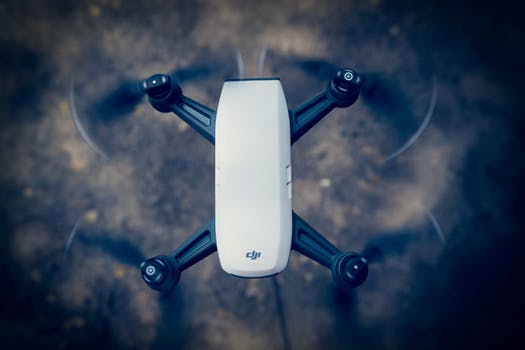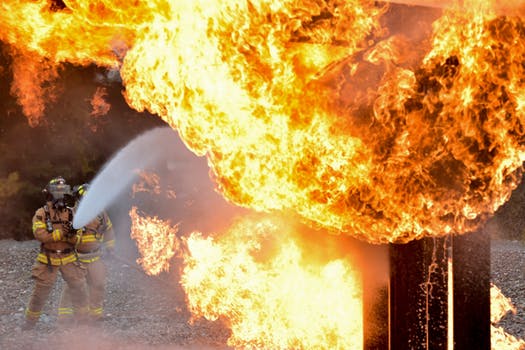Drones are an efficient and cost effective way of ensuring public safety. It is imperative that the right drone is selected and adequate training is provided to public safety officials. Should public safety officials opt for Part 107? How can they overcome budget constraints? What is an effective way of removing public’s reservations against usage of drones? Read on to find out.
Selecting the right drone for public safety
So, what are some of the critical factors to consider while purchasing a drone for public safety? Flight duration tops the list. It is wise to opt for a larger, more expensive bird with a flight time of at least 50 minutes. A 20-30 minute flight time that you can expect from an Inspire or a Phantom 4 Pro might not be enough. Because these birds have a higher payload capacity, they can be equipped with a drop system. This is critical for search and rescue. Moreover, smaller drones can be equipped with only one sensor, which is the EO sensor. However, for public safety operations you might need a thermal sensor as well.
It is possible to equip larger drones like the M210 and the M600 with two sensors. The M210 is a good cross between economy and capability. The Texas Department of Safety uses a $48,000 Aeryon Skyranger equipped with a high technology camera. This bird is mostly used for crash scene reconstruction.
Deployment time and wind handling capacity are some of the other factors worth a mention. Larger birds have a greater wind handling capacity of up to 35-40 MPH and can withstand any kind of weather. UAS portability is necessary to ensure operational efficiencies. A UAS that can be immediately dispatched from the trunk of a vehicle and managed by a single operator is ideal for use in public safety.
What are some of the potential uses for drones in public safety?
Drones can potentially be used for pre-planning in event of a natural disaster or catastrophe. How so? Let’s say there is a steel mill or an oil refinery carrying 2,000 gallons of diesel fuel. Using drone mapping, you can create a digital surface model. This will help you determine, for instance, if the diesel will eventually flow into the ocean in case of a leakage. And you can take necessary precautions to prevent the same.
 Crime scene reconstruction is another area where you can employ your drone. Check out , “How 3D Mapping is Redefining Accident Reconstruction” to learn more about this.
Crime scene reconstruction is another area where you can employ your drone. Check out , “How 3D Mapping is Redefining Accident Reconstruction” to learn more about this.
Do bear in mind that mapping an accident or a crime scene can have a major impact on the entire investigation. If the GPS data is not good enough or the oblique imagery is too high, this will result in obscured data. An innocent person can be prosecuted based on this false data. It is imperative that the correct training is provided so that correct data is collated.
Should public safety officials get their Part 107?
It is advisable to get a Part 107 rather than a public COA. If you opt for a Part 107, you will be able to fly in as little at 10 days. You can also claim damages from the insurance company, a benefit that you cannot avail under a public COA. When you fly under a COA, you are opting for self-certification. In this scenario the FAA can walk away from a matter without claiming any responsibility.
Concerns and challenges which are hindering the adoption of drones in public safety
The West is no match for the Chinese drone maker DJI. Western companies such as GoPro, Lily Robotics and 3DR have either downsized or shut down shutters while trying to compete with this Chinese behemoth. Data security is an issue for many as they use Chinese manufactured equipment. Drone pilots do have some tricks up their sleeve for protecting data. Supposedly you can crack open the flight controller and pop out the SD card. Some officials also resort to turning off cellular data in order to protect data.
Space constraint is another issue. Most fire engines do not have a lot of space. Inspire 1 is good if you have space constraints. Check out, “Drone Comparison?—?How Does the Yuneec Compare to Phantom 4 Pro and Inspire?” to learn about the pros and cons of flying the Inspire 1.
However, if you are faced with windy conditions, the M600 flies like a boss. Another problem with using drones for fire fighting is the resulting ferromagnetic interference if steel trucks are used. This problem can be eliminated by using aluminum or fiber glass as the material of construction.
Budget is an issue with many fire departments as well. Most fire engines cannot afford to have more than 2 people manning a fire engine. So, effectively when a fireman is flying a sUAS, he cannot perform his traditional firefighting duties. Another issue is public perception. Some departments will never get a budget for drones since public feels that they are being spied on.
Conclusion
It is critical that safety organizations educate the public in order to remove any reservations that they might have against drones. Sharing stories of past successes is a great way to do this. Further, safety organizations can also consider involving the local ACLU to review UAS policies. Creating safeguards to ensure privacy and having a clearly defined training and safety regimen will also help push the cause forward.
Check out our Medium page for more such content
Do not forget to subscribe and Listen to Ask Drone U, the #1 drone podcast
Connect with a vibrant drone community by becoming a Drone U member







Add Your Comment